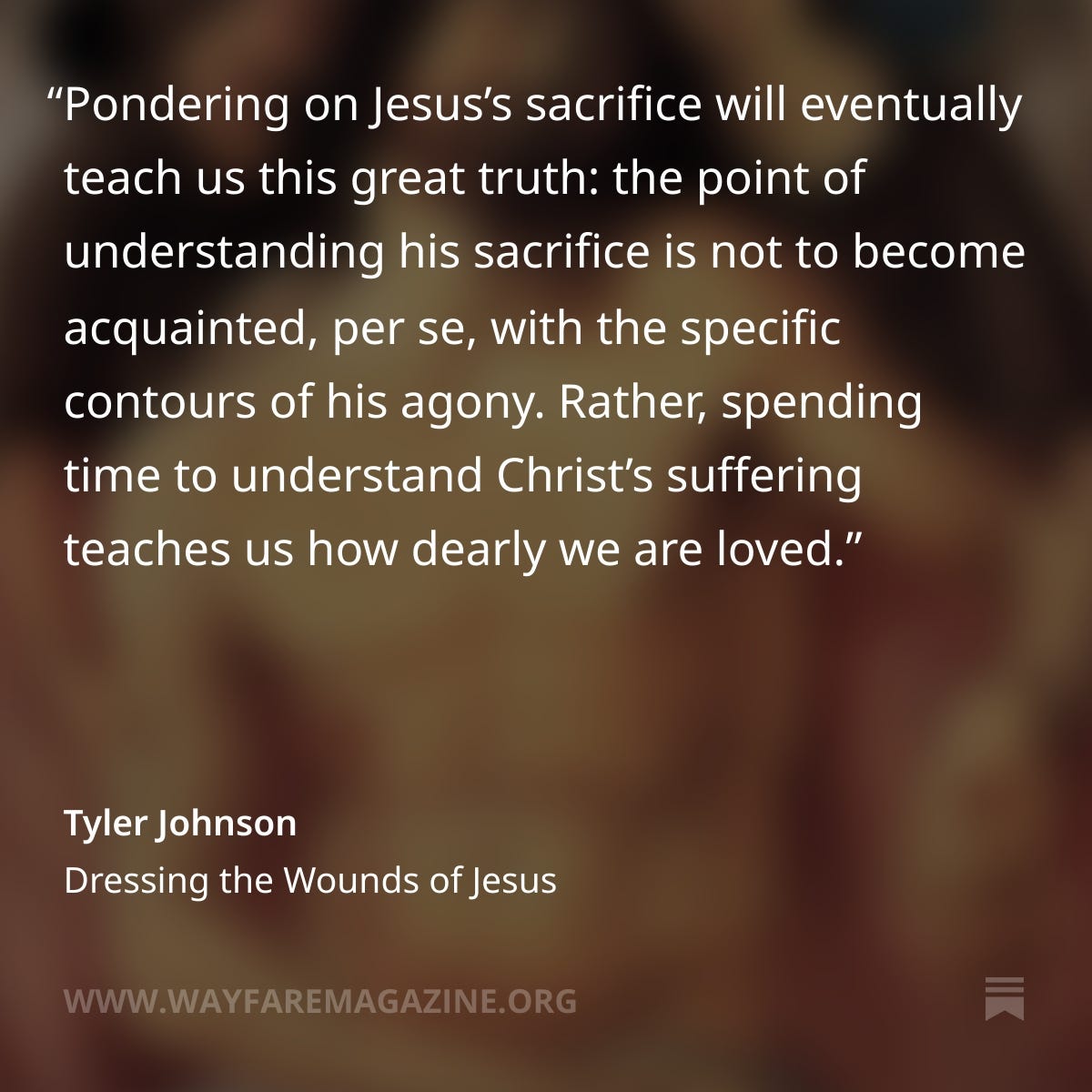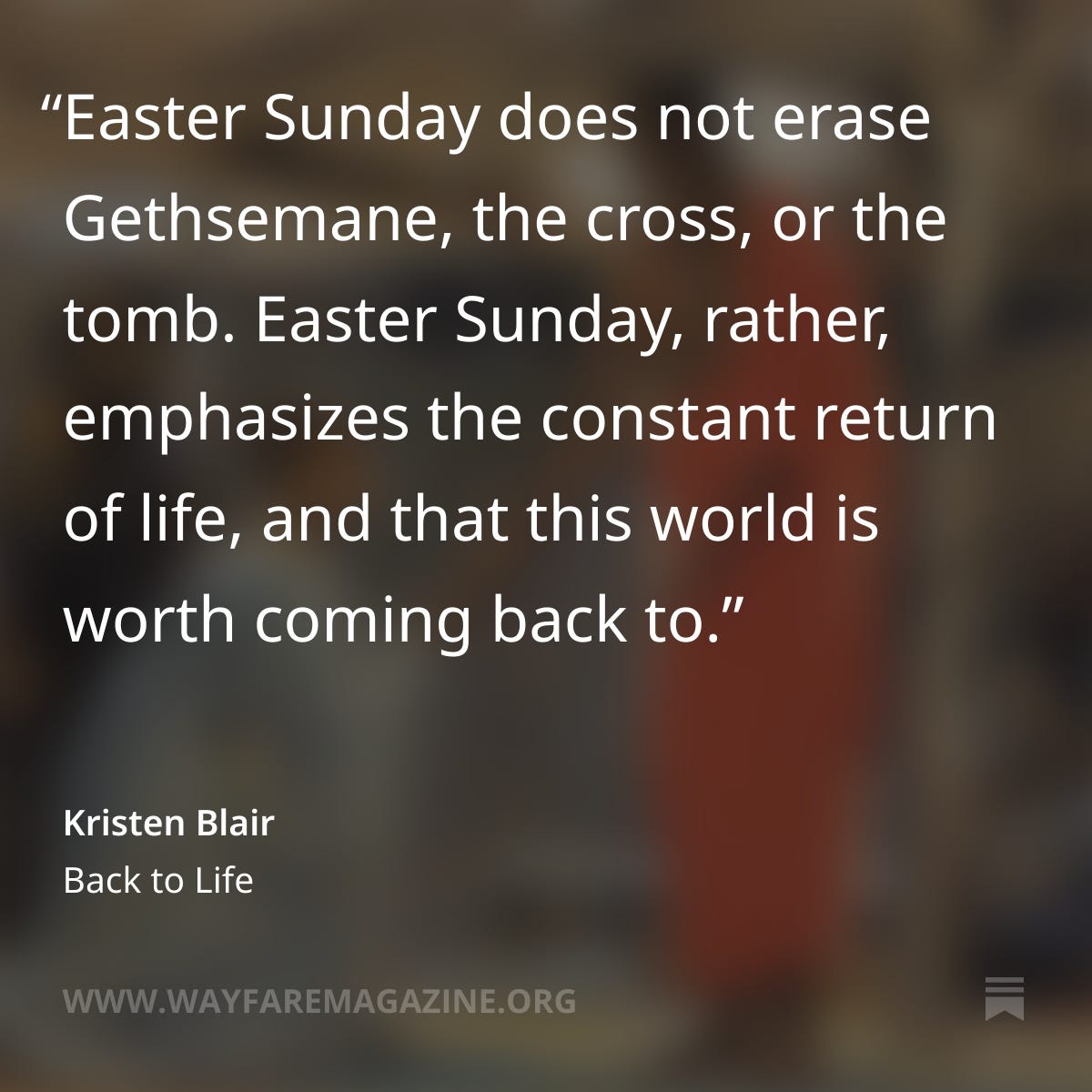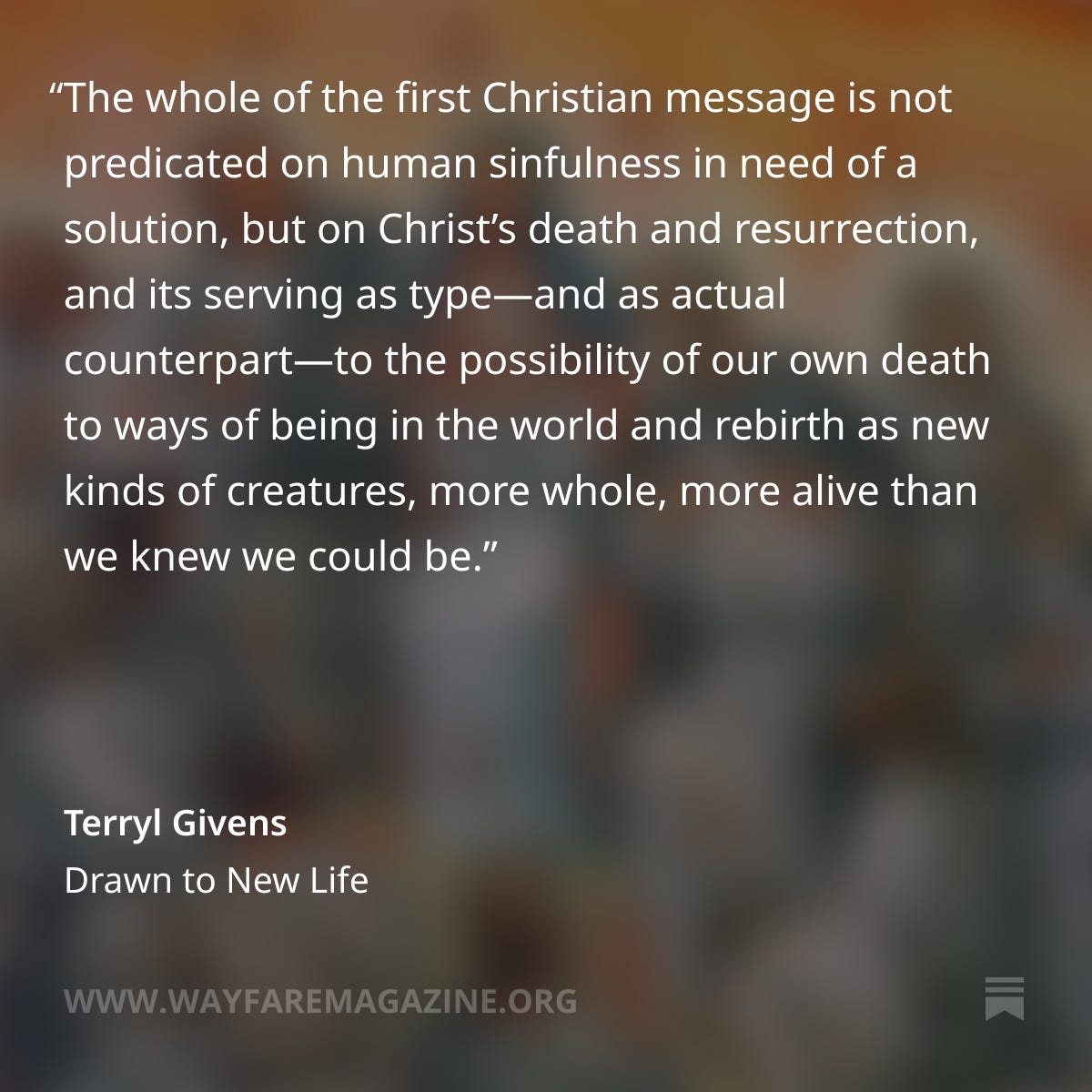Easter & Holy Week resources from Faith Matters
Resources from Faith Matters to accompany your Holy Week Come Follow Me study: April 13-20
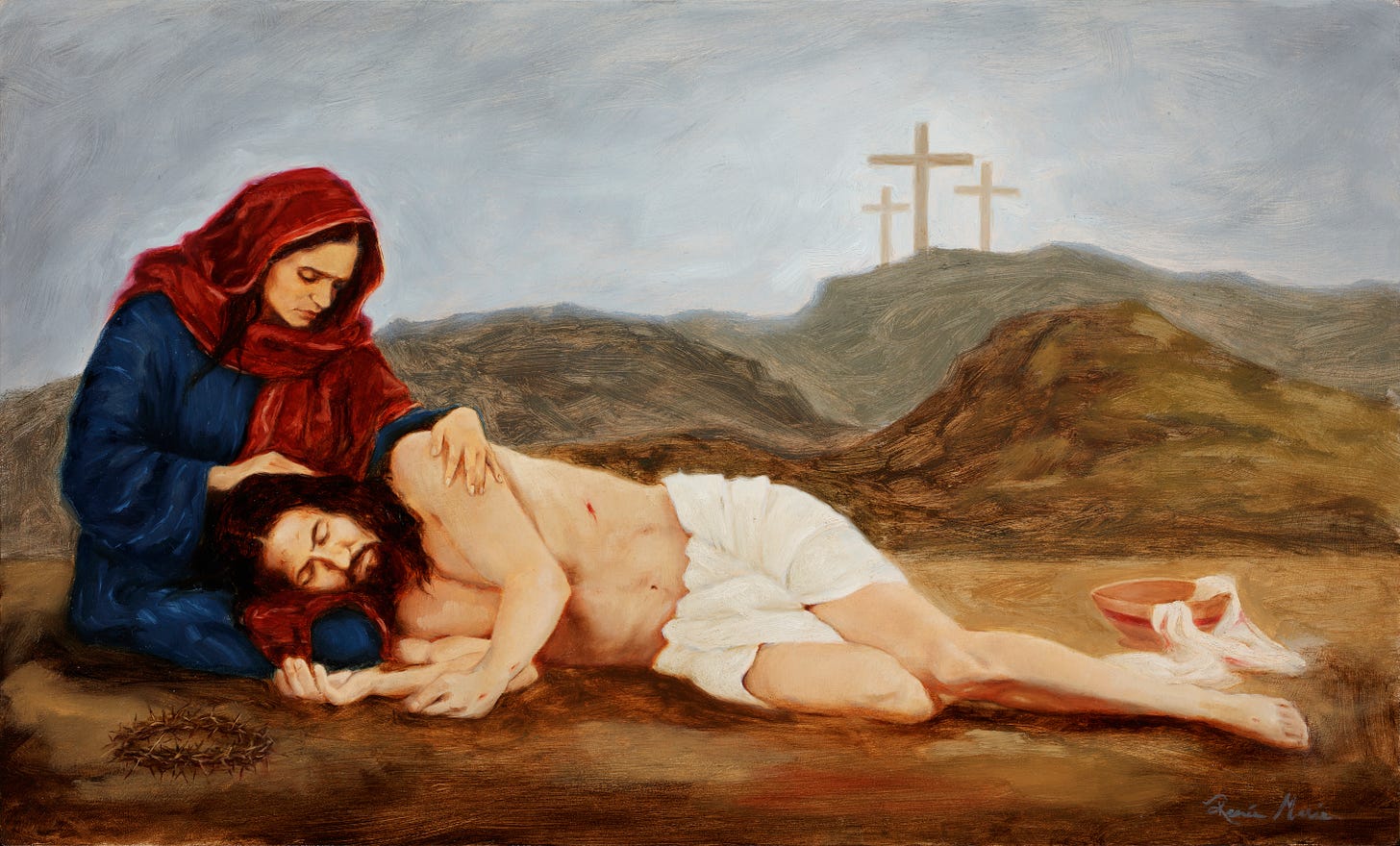
How to Celebrate Holy Week
Find a short post from Wayfare with art, poetry, and scripture for each day of Holy Week here, and be sure you are subscribed to Wayfare and have turned on notifications for “Holy Days” to receive each post as a daily email to inspire you during Holy Week this year! Plus, find last year’s posts here.
You can also check out these conversations we’ve had with Eric Huntsman on how to celebrate each day of Holy Week:
Eric Huntsman: What's So Good About Good Friday?
As Latter-day Saints, we often say that we focus more on Jesus’ resurrection than on His death, and we consider the atonement in Gethsemane as the most sacred event in Jesus’ life. In this episode, we consider a question we don’t think about too often, stemming from this: why have we not cultivated more robust ways to celebrate Holy Week, and all the events leading up to Easter Sunday? Especially when we compare it to all that we do leading up to Christmas?
Atonement

Read a beautiful chapter from Terryl and Fiona Givens’ book All Things New, titled “Atonement: From Penal Substitution to Radical Healing.” It sketches out an understanding of Atonement that is more faithful to the original understanding. The Givens walk us through the history of poorly translated texts and the incursion of a medieval worldview that reflected the notion of a jealous, retributive God. They show how we’ve inherited from later Christianity a conception of Atonement that focuses on being “saved from depravity and damnation” rather than being “healed and empowered.” Religious language matters, and by absorbing the language derived from inadequate Biblical translation, we can do ourselves a great disservice. By considering better Biblical translations, Restoration doctrine, and the details of Jesus’s life, the Givens point to an evolving understanding of Atonement that, in the words of theologian Delores Williams, can give “humankind new vision to see the resources for positive, abundant relational life.”
Go deeper with The Big Questions Project: Do we misunderstand Christ’s Atonement?
And find even more resources here:
“I don’t pretend to understand what we even mean by his atoning sacrifice. But what I think I do know, as a matter of historical record, is that this man Jesus willingly gave himself up to torture and death on the cross because he was convinced that by doing that he could alleviate my pain, promote my healing, and bring about my resurrection.”
—Terryl Givens, “When Faith is Hard”
Listen to “Exploring Atonement” — a conversation with Terryl Givens. This conversation starts with the fascinating premise that our faith doesn’t actually have an official theology of Atonement. What is clear, doctrinally, is that Christ brought about something of universal importance: as the Book of Mormon says, “we talk of Christ, rejoice in Christ, we preach of Christ, (and) we prophesy of Christ.” (2nd Nephi 25:26) We accept Christ as both savior and healer — but that doesn’t mean that we’ve achieved a consensus understanding of how Christ’s atonement actually accomplished those goals of “saving” and “healing.”
So in this conversation with Terryl, we discussed various atonement theories — what some of the greatest Christian and Latter-day Saint thinkers have posited over the years about how the atonement works; why it’s necessary, and how it can apply in real life. It seemed to us that there was something to value in nearly all of these explorations, and it was fascinating to see how those views have evolved over time.
And, as it always does, conversation with Terryl brought us back to what’s really important: how Christ’s atonement can bring less retribution and more healing to society, and how we can participate in that work. Terryl reminded us that Atonement is about reintegration into loving relationship — not just vertically with God, but horizontally with those around us.
We all need a Savior at times to speak on our behalf, and the fact that he earned his bona fides by being here, by suffering as we did, is what gives him the credibility and the power to change lives.
—Joseph Grenny, “The Other Side Academy: Zion with F-Bombs”
I've come to believe that I understood the atonement far too small. I think at its smallest, we think it's about being forgiven of sins. A little larger, and we think it's about changing our character. But you and I have the opportunity to understand that it's way bigger than that. President Nelson says that the gathering of Israel is the most important work taking place on the Earth, and that is atonement work. Atonement work is about sealing relationships. We understand that exaltation is collective, not individual. —Joseph Grenny
Crucifixion
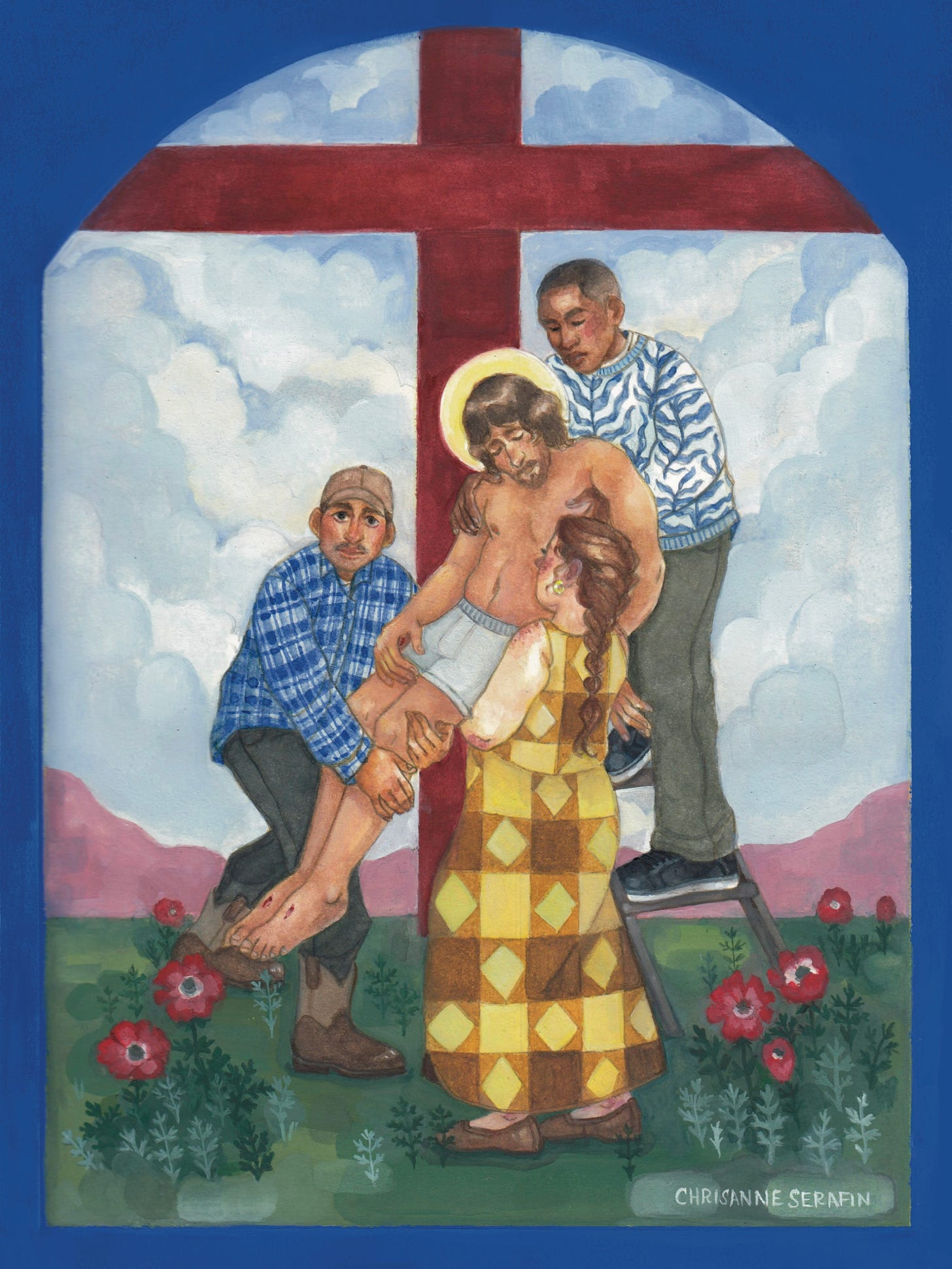
“For most of church history, no single consensus prevailed on what Christians mean when we say, “Jesus died for our sins.” But in recent centuries, one theory did become mainstream. It is often referred to as the “penal substitutionary atonement theory,” especially once it was further developed during the Reformation. Substitutionary atonement is the theory that Christ, by his own sacrificial choice, was punished in the place of humans, thus satisfying the “demands of justice” so that God could forgive our sins. … Salvation became a one-time transactional affair between Jesus and his Father, instead of an ongoing transformational lesson for the human soul and for all of history. I believe that Jesus’ death on the cross is a revelation of the infinite and participatory love of God, not some bloody payment required by God’s offended justice to rectify the problem of sin. Such a story line is way too small and problem-oriented.” —Richard Rohr
Listen to our conversation with John Hilton III on how bringing Christ’s crucifixion, and even the symbol of the cross, more prominently into our discourse and culture could really enhance and broaden our worship experience and our spiritual lives:
“God refuses to let us be alone, and so God sends God’s only son as far as we are, and always one step further than we are from God, so that even wherever we are, we are always in the reach of God’s embrace.
And what that looks like, Hans Urs von Balthasar says, that looks like Jesus on the cross. Because here’s where we are. We are in a place where we would do this to the son of God, right?
And this is what Julian of Norwich says as well, she says, If that’s where we are, God says, okay, I’ll go there. Because that’s where you are, and I will not let you be alone.
Now, what it looks like is this profound suffering, but it’s not a suffering that pays for sin. It’s a suffering that courageously goes to where sin is and decides to love anyway.”
—Matthew Potts in “Rethinking Forgiveness” on the Faith Matters podcast.
Resurrection
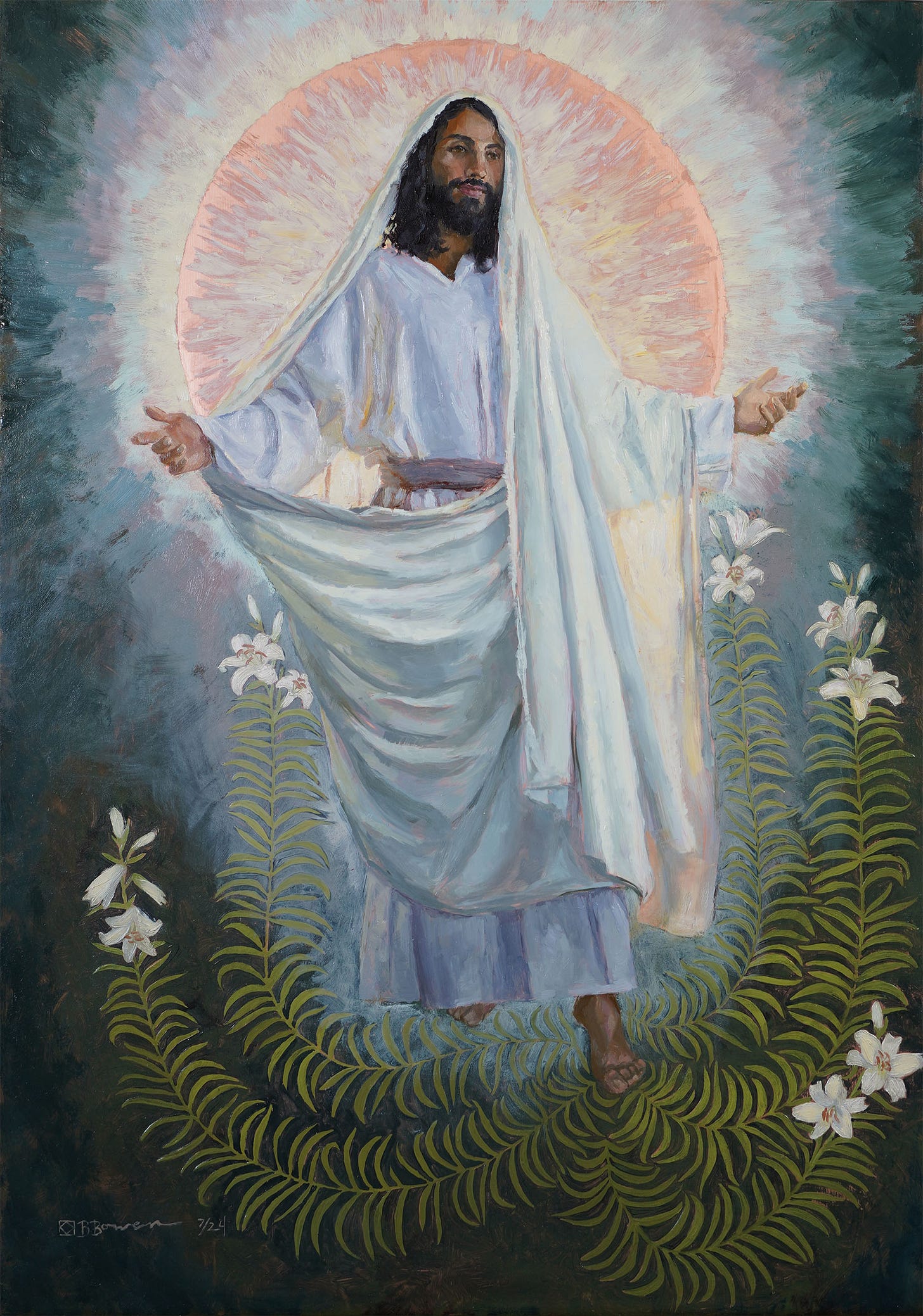
As Christians, we look forward to resurrection after death into a state of wholeness and joy. But understanding resurrection as occurring only in the next life can prevent us from experiencing the fullness of life that Christ offers us here and now. What if we looked at resurrection as a process that can begin now as we allow Christ to live in and through us?
We invited our friend Adam Miller on to talk about his book An Early Resurrection: Life in Christ Before You Die. In this inspiring, profound little book, Adam shows us how, in a very real sense, Christ can start this process of rebirth now, in ways that can radically change how we experience even the most ordinary and mundane things in life.
As we celebrate Easter, we hope these ideas about resurrection can give you new perspective on the words of the Savior: “I am come that they might have life, and that they might have it more abundantly.”
I think the idea of new life and new beginning is central. I think that is for me what the resurrection story’s about: new life and new beginning in the wake of irreparable harm.
And the resurrected body of Jesus Christ is this site of kind of ambivalence because there is new life, but those wounds are still there. The wounds have not been closed. And, “I am with you all days,” Jesus promises... as He’s floating up into the heavens. And His disciples need to kind of figure it out on their own that, even if He’s with them, He’s not with them the way he was two weeks ago.
New life is gonna mean some loss. So new life can accommodate loss. I think that’s the promise that Jesus gives us. Even in this supernatural way, even in this superhuman way, fully risen with open wounds, ascending into the heavens and leaving and departing and saying, “I’m always with you, but you’re gonna need to figure this out.” Right? But it’s there. The new life is there. I think that, I think that is the promise. …
We are gonna have to learn to live with loss, but also know that the promise of new life is real. And the new life does not compensate for what’s lost. But the new life is still real. It’s new life. And if we let the fact of the loss convince us that the life isn’t life, then that’s a victory for the loss, right?
I think as Jesus comes before the disciples with his open wounds, what he’s saying is, yes, this thing, this fact of the past cannot be undone. But don’t stop there. Because God’s love will always go one step further than you have gone. And there is always new life.
It doesn’t mean it’ll erase the pain necessarily, but healing isn’t necessarily about erasing pain. When we heal from griefs in our personal lives, we can still look back upon people we’ve lost and feel pain while recognizing that we’ve also experienced healing, that we’ve moved on in a way and are able to find new meaning and new life. And I think that’s what Jesus is calling us toward, at least in this world.
—Matthew Potts in “Rethinking Forgiveness” on the Faith Matters podcast.








